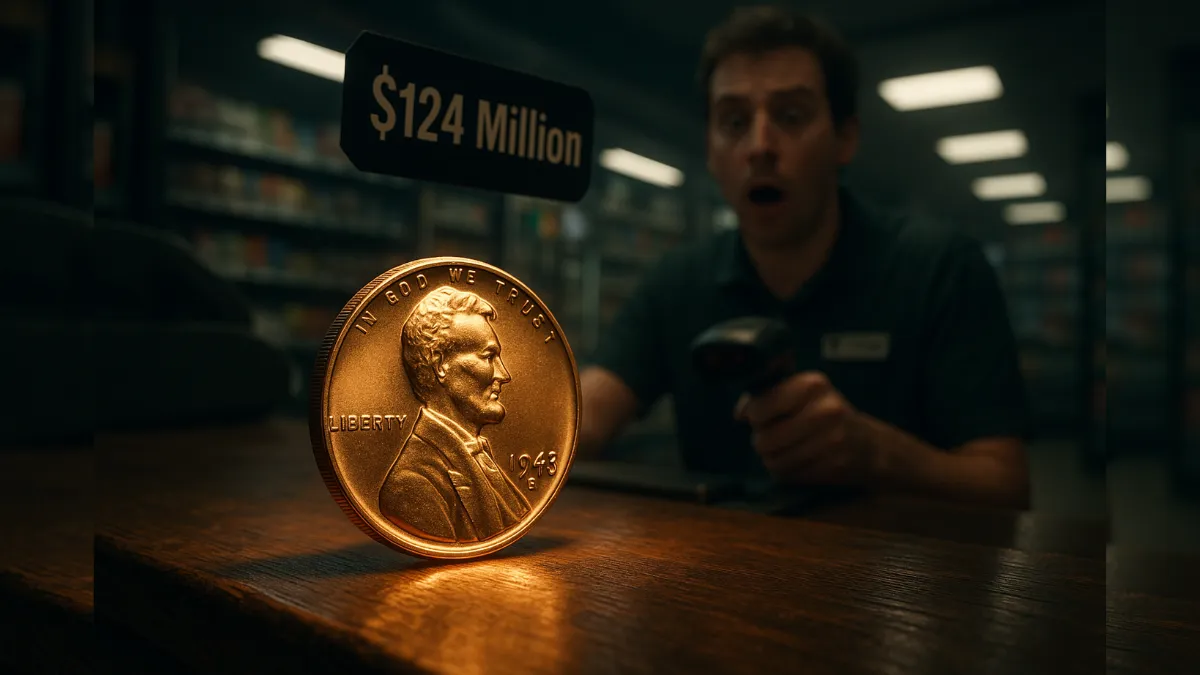It might seem far-fetched, but that seemingly insignificant penny tucked away in your piggy bank could be worth an astonishing fortune. Believe it or not, some rare Lincoln Wheat Pennies have reached legendary status in the coin-collecting world—one such coin is even said to be valued at a staggering $124 million. That’s not pocket change—it’s life-altering money!
Let’s explore the fascinating tale behind this iconic coin and why your spare change might just hide a hidden gem.
The Birth of an American Icon
Our story begins in 1909, when the U.S. Mint set out to honor President Abraham Lincoln’s 100th birthday. For the first time in American history, a real person was featured on a circulating U.S. coin. Artist Victor David Brenner crafted a striking design with Lincoln’s profile on the front and two wheat stalks framing the denomination on the reverse. This simple yet timeless look earned the coin its nickname—the Wheat Penny.
Not bad for a coin that millions of people once carried around in their pockets.
From Common Coin to Collector’s Trophy
The Lincoln Wheat Penny was produced from 1909 until 1958, before being replaced by the Lincoln Memorial design. While billions were minted during those years, only a small number have emerged as highly sought-after treasures in the numismatic world.
Most Wheat Pennies are only slightly more valuable than their face value. But a rare few? They’ve become the crown jewels of coin collecting, capable of transforming their finders’ lives overnight.
What Makes a Penny Worth a Fortune?
So, what’s the secret behind a penny fetching millions? Several unique traits can elevate a coin’s value:
- Minting Mistakes: Sometimes, flaws make coins worth more. In 1943, copper was reserved for wartime materials, so the Mint used zinc-coated steel instead. However, a few copper pennies accidentally slipped through—and those 1943 copper coins are now among the most valuable ever made.
- Low Production Numbers: Some pennies were minted in very limited quantities, especially at smaller mints like San Francisco (“S”) and Denver (“D”). Rarity often drives demand.
- Unique Errors: Errors like double-strikes (where the coin is stamped twice) or off-center imprints can make a coin rare and incredibly valuable.
How to Identify a High-Value Wheat Penny
Before you toss your spare pennies into a change jar, take a minute to inspect them. Here are some key things to look out for:
- Rare Dates: Keep an eye out for 1909-S VDB, 1914-D, 1922 (without a mint mark), 1943 (in copper), and the famously flawed 1955 double die.
- Magnet Trick: If you’ve got a 1943 penny, try sticking it to a magnet. If it doesn’t stick, it might be one of the rare copper ones instead of the common steel.
- Look for Mint Marks: Tiny letters beneath the date indicate where the coin was minted. An “S” or “D” can add significant value, especially when matched with the right year.
There Are Still Treasures in Circulation
The best part? Valuable Wheat Pennies are still out there in everyday change. They could be sitting unnoticed in a coin jar, buried in a drawer, or handed to you as change from the corner store. Because so many people don’t know what to look for, these valuable coins continue to quietly trade hands unnoticed.
Why Coin Hunting is So Addictive
There’s something undeniably exciting about the idea that your next coin could be worth a fortune. That thrill of discovery is why so many people are drawn to coin collecting. It’s an easy, engaging hobby anyone can get into—and it might even pay off big.
You don’t have to be a history buff or seasoned collector to join in. All it takes is curiosity and a bit of attention to detail.
Final Thoughts: That “Ordinary” Penny Might Be Anything But
The next time you dig through your change, don’t be so quick to dismiss those old pennies. Take a moment to inspect them—you might just uncover a valuable piece of history.
And who knows? That overlooked little coin could turn out to be a multimillion-dollar treasure in disguise.
FAQs
How do I know if my Wheat Penny is valuable?
Check the date, mint mark, and for errors like double strikes. Rare years and mistakes can mean big value—have it appraised to be sure.
Where can I sell a rare penny?
You can sell through coin dealers, auctions, or online platforms like eBay. Just be sure to research the buyer and check recent sale prices.
Are all Wheat Pennies valuable?
Not all—most are worth a few cents to a few dollars. Only rare dates, mint errors, or coins in excellent condition are worth big money.
What’s the best way to store valuable coins?
Use acid-free holders or albums. Store in a dry, cool place and handle by the edges to avoid damage from oils or fingerprints.
